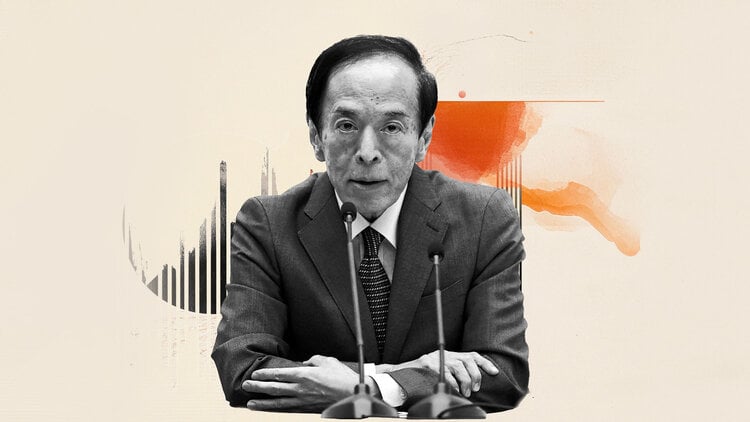- The Dollar recovers after the pause in the Fed rates.
- Dollar plummets and remains flat as dust settles from Fed meeting.
- The US Dollar Index is within reach of 104 if it manages to advance this Thursday.
He US dollar (USD) falls back to virtually flat before the opening of the American session, after initially rising following the US Federal Reserve's first decision on interest rates and comments from the US Federal Reserve Chairman, Jerome Powell. Although Powell was against a rate cut in March, the possibility of a cut was not ruled out. Following the same “tug of war” pattern that has been seen in the markets in recent weeks, the current strength of the Dollar appears to be a mere reassessment of the timing of the rate cut, with the risk that the Index of the Dollar unable to move away from the 200-day simple moving average near 103.55.
On the economic front, the US employment report will be published on Friday, with the initial weekly claims for unemployment benefits. Although both the initial and follow-up figures remain within a range, the added weight of a doubling of the Challenger job cuts figure could worry traders.
Daily Market Summary: Employment data starting to change
- This Thursday began with the January Challenger job cuts, which amounted to 82,307 compared to the previous 34,817. That is, more than double.
- Jobless claims are falling in line with the number of job cuts and are also rising:
- Initial applications increase from 215,000 to 224,000 applications.
- Continuation applications go from 1,828 million to 1,898 million.
- S&P will publish its global manufacturing Purchasing Managers' Index (PMI) for January at around 2:45 p.m. The previous one stood at 50.3.
- At 3:00 p.m., the Institute of Supply Management (ISM) will release manufacturing PMI figures for January:
- Manufacturing is expected to go from 47.4 to 47.
- The ISM index of prices paid in manufacturing is expected to go from 45.2 to 46.9 points.
- The ISM Manufacturing new orders index previously stood at 47.1, with no forecast available.
- The employment index stood at 48.1, without consensus.
- Around 4:30 p.m., the US Treasury Department will distribute a 4-week bond.
- Stock markets very mixed, with small gains in Europe and US futures slightly in the green. Britain's FTSE 100 is trading flat ahead of Thursday's central bank meeting.
- CME Group's FedWatch tool now focuses on the March 20 meeting. Expectations of a pause are 64.5%, while 35.5% advocate a rate cut.
- The 10-year US Treasury yield is trading lower at 3.94%, the lowest level of the week.
US Dollar Index Technical Analysis: The Fed is hot on its heels
The US Dollar Index (DXY) has soared following the Fed's rate decision and Fed Chair Jerome Powell's speech. However, this move must be accompanied by some parental counseling, since it is clear that recovery is not going to happen here. The Fed did a good job on Wednesday of steering markets away from a rate cut in March and avoiding a carnage, while rate cuts in May or June are increasingly plausible and logical, and do not require a sharp repricing. of the US dollar for that matter.
If the Dollar Index manages to break the 200-day SMA at 103.55, the next level will be the 100-day SMA near 104.30. If Friday's US jobs report shows all components falling in favor of further dollar strength, expect another jump higher to 105.12. This would mark a new three-month high for the DXY.
In the same tug-of-war scenario that the DXY has been displaying for almost half of January, it would be plausible for the US Dollar to lose traction against most of its peers and for the Dollar Index to retreat again. First support is expected at the 200-day SMA, near 103.55, before heading to the 55-day SMA, at 103 points. If this last level is broken, a plummet to 102.00 could occur.
US Dollar FAQ
What is the US Dollar?
The United States Dollar (USD) is the official currency of the United States of America, and the “de facto” currency of a significant number of other countries where it is in circulation alongside local banknotes. According to 2022 data, it is the most traded currency in the world, with more than 88% of all global currency exchange operations, equivalent to an average of $6.6 trillion in daily transactions.
After World War II, the USD took over from the pound sterling as the world's reserve currency.
How do the decisions of the Federal Reserve affect the Dollar?
The single most important factor influencing the value of the US Dollar is monetary policy, which is determined by the Federal Reserve (Fed). The Fed has two mandates: achieve price stability (control inflation) and promote full employment. Your main tool to achieve these two objectives is to adjust interest rates.
When prices rise too quickly and inflation exceeds the 2% target set by the Fed, the Fed raises rates, which favors the price of the dollar. When Inflation falls below 2% or the unemployment rate is too high, the Fed can lower interest rates, which weighs on the Dollar.
What is Quantitative Easing and how does it influence the Dollar?
In extreme situations, the Federal Reserve can also print more dollars and enact quantitative easing (QE). QE is the process by which the Fed substantially increases the flow of credit into a clogged financial system. This is an unconventional policy measure used when credit has dried up because banks do not lend to each other (for fear of counterparty default). It is a last resort when a simple lowering of interest rates is unlikely to achieve the necessary result. It was the Fed's weapon of choice to combat the credit crunch that occurred during the Great Financial Crisis of 2008. It involves the Fed printing more dollars and using them to buy US government bonds, primarily from financial institutions. QE usually leads to a weakening of the US Dollar.
What is quantitative tightening and how does it influence the US dollar?
Quantitative tightening (QT) is the reverse process by which the Federal Reserve stops purchasing bonds from financial institutions and does not reinvest the principal of maturing portfolio securities in new purchases. It is usually positive for the US dollar.
Source: Fx Street
I am Joshua Winder, a senior-level journalist and editor at World Stock Market. I specialize in covering news related to the stock market and economic trends. With more than 8 years of experience in this field, I have become an expert in financial reporting.







